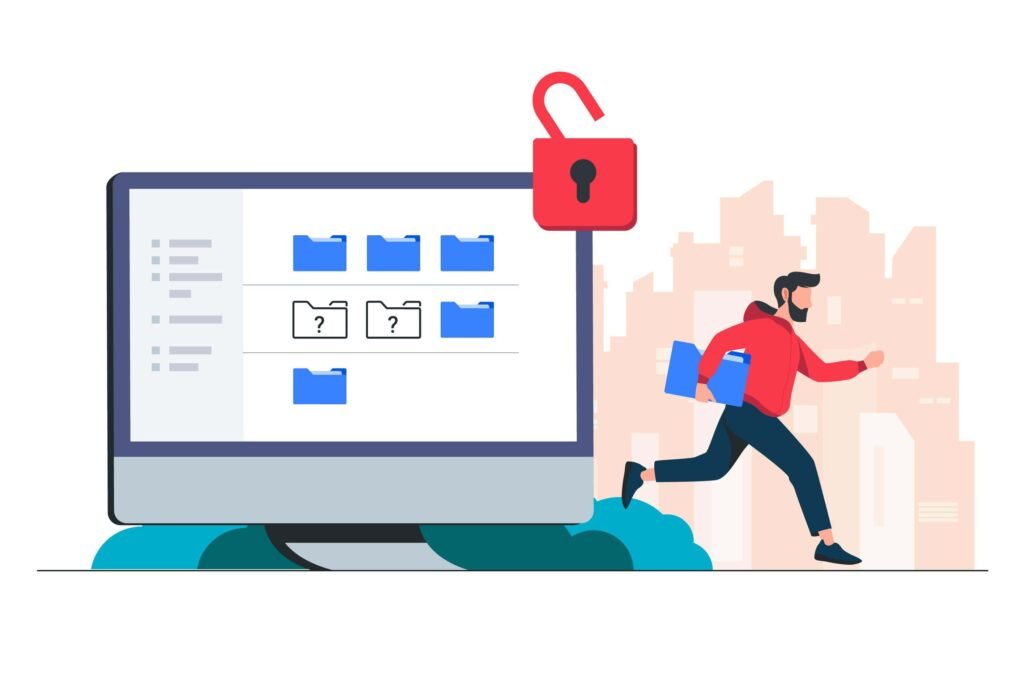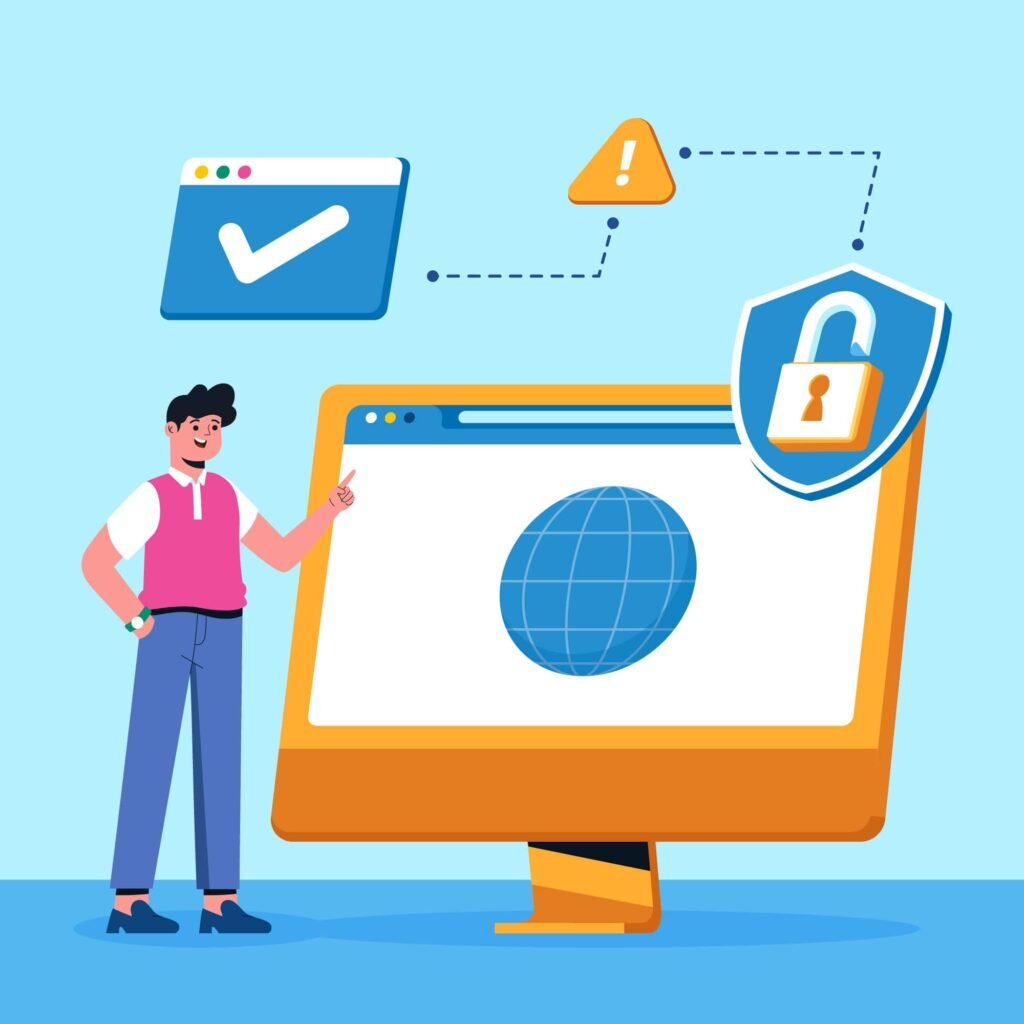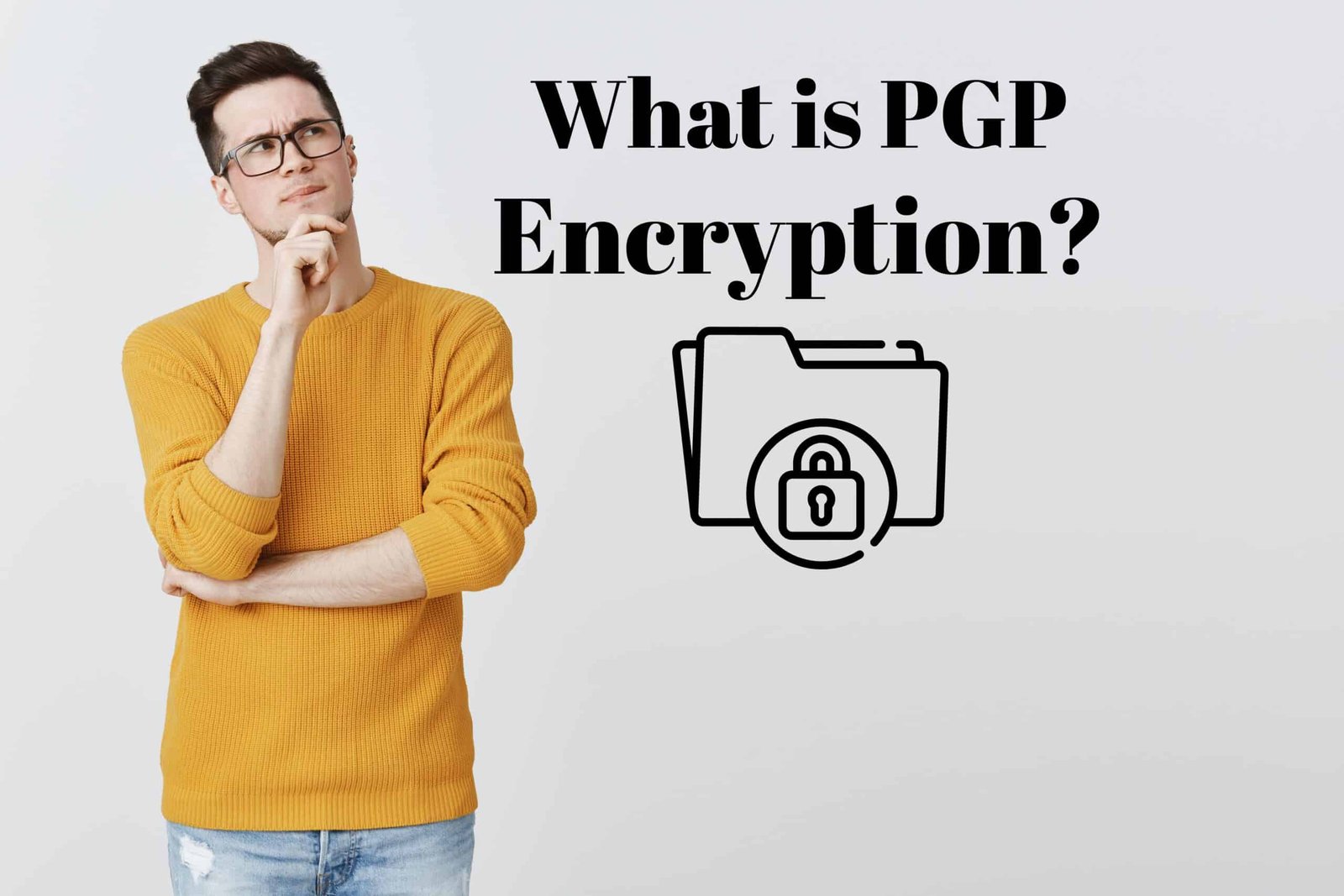What is PGP Encryption?
PGP Encryption is like a secret code for the internet. Imagine you want to send a letter but only want the person it’s meant for to read it. Back in the day, you might have sealed it with wax. Nowadays, we’ve got PGP Encryption, which is like that wax seal for digital messages, ensuring only the right eyes see your private stuff online.
PGP, which stands for Pretty Good Privacy, is like a magic trick for your online messages and files. It mixes them up into a big, confusing puzzle that only the person you’re sending it to can solve. Think of it as putting a puzzle in a box and sending it off, but only your friend knows how to fit the pieces together. Sounds simple, huh? But there’s more to it, and that’s what makes it so interesting. Let’s take a closer look and unwrap the secrets of PGP Encryption, one layer at a time.
How Does PGP Encryption Work?
Exploring “How Does PGP Encryption Work?” takes you to a world where keeping things private and making sure they’re genuine is key. Imagine you’re sending a secret note; PGP is like your trusty delivery person, making sure it gets to your buddy without anyone else sneaking a peek.
At its heart, PGP mixes two types of secret code methods: one that uses a public key and another that’s symmetric, which means it uses the same key to lock and unlock. It’s like sending a locked box in a public mail system, but only your friend has the special key to open it. First, PGP mixes up your message with a symmetric key that’s used just once, kind of like a one-time padlock. This turns your message into a bunch of gibberish for anyone who might grab it.
But here’s the smart twist: PGP takes the scrambled key and locks it up with your friend’s public key. Only your friend can use their private key to open it up. After opening, this key is then used to make the original message clear again. It’s like wrapping your secret in two layers of protection, making sure only the person you’re sending it to can uncover the secret.
This smart exchange of keys makes sure your message stays a locked-away secret, safe as it moves through the online world. PGP doesn’t just keep things quiet; it also makes sure nobody has messed with your message, keeping it just as you sent it from start to finish. So, PGP is like sending a secret note in a box that’s locked twice, where only the person getting it can open it, keeping things private and trustworthy online.
Example of PGP Encryption in Action

Example of PGP Encryption in Action
Let’s imagine PGP Encryption like it’s a scene from a spy movie. Imagine yourself as Alice, and you’ve got this super-secret apple pie recipe you need to get to Bob, making sure no one else can sneak a peek.
First off, you write down your recipe. To keep it secure, you use PGP to mix it all up into nonsense, kind of like changing it into a secret code that only Bob can crack. This is done with a symmetric key, which you can think of as a special secret password just for this message.
Now, to make sure Bob can safely get the secret code (the symmetric key) you used, you lock it up with something called Bob’s public key. This public key is out there for anyone to see, kind of like a mailbox on the street where anyone can drop a letter in, but only Bob has the key to open it. So, only Bob can use his special private key to unlock the secret code you sent. It’s like you’ve sent a secure inside another safe, and Bob is the only one who knows the combo to the inner one.
When Bob gets your message, he uses his private key to open up the secret code and then uses that code to make sense of your message, finally getting to see the apple pie recipe. All through this process, your recipe stays a secret to everyone except Bob, making sure it doesn’t get into the wrong hands.
This whole thing shows what PGP is all about mixing public and secret code encryption to make sure only the person you’re sending your message to can read it. It’s like a digital secure, keeping your secrets well-protected as they make their way across the big, wild internet.
PGP Encryption Uses
PGP Encryption isn’t just good for one thing; it’s like a Swiss Army knife for keeping things secure online. Let’s take a look at all the different ways PGP Encryption can be used, showing how handy and important it is for lots of different situations.
- Email Security: PGP is great for making sure your emails get where they’re going safely, without anyone messing with them or peeking inside. It’s like mailing a letter in a super-strong, see-through envelope that nobody can break into.
- Data Protection: In a world where data is super valuable for you, PGP helps keep your important info secure, whether it’s on your computer or in the cloud. It’s like having a digital security that only you have the combination of.
- Authentication: PGP does more than just hide your stuff; it also makes sure your messages are from you and haven’t been changed. It’s like putting a unique wax seal on a letter that proves it’s legit.
- Integrity Checks: PGP uses something called digital signatures to make sure your messages stay just the way you sent them, with nothing added or taken away. It’s like promising that the letter you send is exactly what the other person will get, with no funny business.
- File Storage and Sharing: When you’re keeping your files secure or sharing important ones, PGP encryption adds a layer of security, making sure only people with the right ‘keys’ can get in and see them.
These examples show how PGP Encryption acts like a big, protective shield for our online chats and information. It keeps our private stuff private, makes sure our messages don’t get messed with, and confirms they’re really from who they say they are, all in a world full of online dangers. It proves how crucial PGP is for keeping things secure and private in our digital world.
Do I Need Pretty Good Privacy Encryption?
Jumping into the online world without encryption is like sailing into a stormy sea without a lifeboat – you’re at risk from all the cyber dangers out there. So, should you use Pretty Good Privacy (PGP) Encryption? Let’s simplify it.
If your online routine is just sending casual emails, scrolling through social media, and shopping online, you might wonder, “Do I need this?” But even when we’re just doing everyday online stuff, we share important info like passwords, personal details, and bank info, often without thinking too much about it.
For people stepping into areas where privacy is super important – like activists, journalists, or businesses with secret information – PGP is more than just a good idea; it’s essential. It’s like making sure your doors and windows are locked tight in a risky neighborhood.
But here’s the thing: online dangers don’t just go after the big players; anyone can get caught up in them. Things like identity theft, data leaks, and privacy issues happen a lot, which makes PGP Encryption a smart move for anyone wanting to beef up their online security.
In short, whether you’re protecting a bunch of important data or just want to keep your chats private, PGP Encryption gives you a strong defense in the constantly changing world of online security. So, the real question isn’t “Do I need PGP Encryption?” but more “Why wouldn’t I use PGP Encryption?”
How Do I Set Up PGP Encryption?

Getting PGP Encryption going might seem like you need to be a technology expert, but it’s more like making your favorite meal just follow the steps one by one and you’ll end up with something great. Here’s how to cook up your digital security layer:
- Choose Your PGP Software: First off, choose your encryption tool. There are many out there, like GnuPG (or GPG for short), which is a great free option that’s open for anyone to use.
- Install the Software: After choosing your tool, download and set it up on your computer or phone. Just click through the steps to install it, just like you would with any app.
- Generate Your Key Pair: This is where it gets cool. Open the tool and choose to make a new key pair. This will create two keys for you – one public and one private, which are like two halves of a secret.
- Verify Your Identity: The tool will ask for your name and email. Don’t stress; it’s just to link you to your public key so people know it’s you.
- Secure Your Private Key: You’ll make a passphrase, which is like a really strong password, to keep your private key safe. Pick something you can remember but mix it up with numbers and symbols to make it extra secure.
- Distribute Your Public Key: Now, spread your public key around to anyone you want to exchange secure messages with. You can put it on a website, email it, or even share it on a key server.
- Start Encrypting: With everything set up, you’re ready to go. To send a secret message, you’ll need the other person’s public key. To read a message meant for you, your tool will use your private key and the passphrase you chose.
And there you have it! You’ve got PGP Encryption up and running. It might look a bit tricky at first, but once you go through the steps, you’ll see it’s a simple way to step up your online security. So, why not give it a shot? Your online self will be grateful.
Advantages and Disadvantages of PGP Encryption
Looking at the advantages and disadvantages of PGP Encryption is like checking out the ups and downs of any strong tool; it’s all about figuring out how it fits into your online world.
| Advantages | Disadvantages |
| Strong Protection: PGP is like a digital super-secure for your chats and files. It uses two strong types of encryption together, making it super tough for anyone unwanted to get in. | A Bit Tricky for Starters: PGP might look overwhelming at first, with all its talk about public and private keys and how to encrypt things. It’s kind of like learning to drive – there’s a bit to learn at the start, but once you’ve got it, it feels easy. |
| Trust and security: With PGP, your information doesn’t just get scrambled; it also gets a digital stamp. This proves to the person getting your message that it’s really from you and hasn’t been messed with, kind of like the old-timey seal on a letter. | Keeping Track of Keys: Looking after your private key and remembering all the public keys you use can be a bit like carrying a big bunch of keys for every door you need to open. It can get a bit much. |
| Well-Known and Trusted: PGP isn’t new; it’s been around and has proven itself. Lots of different programs and apps support it, so it’s a solid pick for keeping things private. | Might Slow Things Down: When you encrypt and decrypt messages, it makes your computer or phone do extra work, which can slow things down a bit, especially with big files or older gadgets. It’s a small trade-off for keeping things secure, but it’s something to keep in mind. |
| Flexible: PGP works whether you’re just keeping your emails secure or you’re a big company protecting important data. It’s versatile and can be scaled up or down to fit what you need. | Staying Careful: Even the best encryption can’t help if people don’t use it right. If folks are careless, like using easy-to-guess passwords or sharing their private keys, it can make all that security for nothing. |
In short, PGP Encryption gives you a strong defense for your online world, keeping your stuff private, real, and unchanged. Like any powerful tool, it has its tricky parts, especially when it comes to using it and keeping things organized. But if you’re up for handling these bits, the level of security you get is top-notch. This makes PGP a key part of keeping things secure and private online these days.
Is PGP Encryption Secure?
Talking about PGP Encryption’s security is like discussing how strong a bank’s security is. It’s not just about whether PGP is secure, but how it holds up as digital security keeps changing.
PGP is built on some really solid secret-code principles that have been around for a long time. It uses a smart mix of two methods: one is public key encryption, which makes swapping keys easy, and the other is symmetric encryption, which is super strong for the actual message. Together, they make a tough wall against anyone who shouldn’t get in.
What makes PGP super strong are the encryption methods it uses and the size of the keys. You can use keys that are 2048 bits long or even more, and trying to break those by guessing would be like trying to count every single grain of sand on a beach. It uses some top-notch algorithms, like RSA for swapping keys and AES for locking the message, which are known to be tough to beat.
But no system is perfect. The weak spot of PGP often isn’t the encryption itself but how it’s set up and used. For example, the security of PGP depends on how well keys are looked after. A private key that’s locked away behind lots of passwords is like treasure in a secure castle. But if that key is not handled properly, leaked, or not well protected, it’s like leaving the castle’s doors wide open.
Also, there’s this big thing about quantum computers on the way, which might shake up how well current encryption, including PGP, can stand up to attacks. This isn’t something we need to worry about right now, but it’s a heads-up that encryption will need to keep getting better.
In summary, PGP Encryption offers really strong protection and is trusted for keeping digital chats and information secure, both for personal use and at work. How well it works depends on being careful with your keys and keeping up with the latest in security technology. For those who use it smartly, PGP is a solid defender of online privacy.
In conclusion
Going through how PGP Encryption works is like taking a trip through the world of digital security. We’ve looked at everything from the basics of how it locks up information tight, to real-life examples that show it in action, and how it’s a must-have in our online lives. We’ve seen how strong it is and looked at its few weak spots, feeling sure about its solid protection even with all the online dangers out there. PGP isn’t just any tool; it’s a key piece in keeping our digital world safe. Whether you’re just surfing the web or holding onto very secret information, getting into PGP is more than just a choice; it’s a big step in making your online space secure. In the big picture of keeping the internet secure, PGP is a special part, woven in with great care, making sure our online chats and info stay secure, now and in the future.







